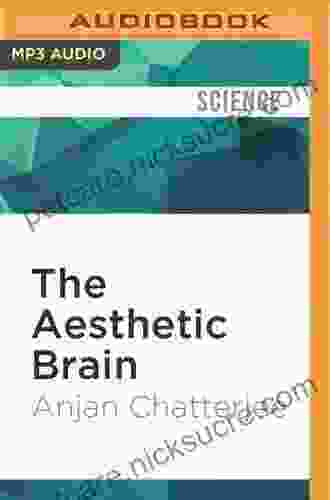Unlocking the Enigma of Beauty and Artistic Appreciation: A Comprehensive Exploration of our Evolutionary Journey

Beauty, an ethereal concept that has captivated minds throughout history, transcends mere aesthetics; it profoundly influences our behaviors, preferences, and emotional landscape. Alongside this alluring enigma, the human fascination with art, a kaleidoscope of creative expressions, has puzzled scholars for centuries. This comprehensive article will delve into the intricate web connecting our evolutionary heritage to our innate desire for beauty and the profound enjoyment we derive from art, unraveling the deep-seated roots of these fundamental human experiences.
Beauty in the Eye of the Beholder: Unmasking the Evolutionary Imperative
The allure of beauty is far from superficial; it is ingrained in our evolutionary blueprint, serving as a subtle yet potent force guiding our mate selection, resource acquisition, and survival strategies. As Charles Darwin eloquently posited in his seminal work, "The Descent of Man, and Selection in Relation to Sex," certain physical attributes deemed aesthetically pleasing by our ancestors bestowed selective advantages, enhancing reproductive success and ensuring the propagation of desirable traits within our gene pool. For instance, facial symmetry, a hallmark of beauty across cultures, has been linked to genetic quality and health, subconsciously influencing our preferences towards potential partners.
4.5 out of 5
| Language | : | English |
| File size | : | 543 KB |
| Text-to-Speech | : | Enabled |
| Screen Reader | : | Supported |
| Enhanced typesetting | : | Enabled |
| Word Wise | : | Enabled |
| Print length | : | 243 pages |
| Lending | : | Enabled |
Furthermore, our perception of beauty extends beyond physical attributes, encompassing broader environmental cues that correlate with resource availability and safety. Lush landscapes, sparkling water bodies, and vibrant flora evoke a sense of aesthetic delight, as they subconsciously signal an abundance of sustenance and a nurturing habitat. This deep-seated connection between beauty and survival has shaped our aesthetic sensibilities, influencing our preferences for harmonious surroundings and the pursuit of objects that gratify our senses.
The Artful Mind: Unveiling the Neural Pathways of Aesthetic Appreciation
The human capacity for artistic appreciation is a testament to the complexity and sophistication of our neurological makeup. When confronted with beauty, whether in the form of a breathtaking sunset, an evocative melody, or an intricate painting, our brains orchestrate a symphony of neural activity, lighting up specific regions associated with reward, emotion, and cognition. Dopamine, a neurotransmitter associated with pleasure and motivation, floods our reward pathways, engendering a sense of delight and satisfaction. Simultaneously, the prefrontal cortex, responsible for higher-order thinking, engages in critical analysis and interpretation, allowing us to appreciate the nuances and subtleties of artistic expression.
Moreover, mirror neurons, specialized brain cells that activate both when performing an action and when observing the same action performed by others, play a crucial role in our empathetic responses to art. When we witness a dancer's graceful movements or hear a musician's heartfelt rendition, these neurons bridge the gap between observer and artist, enabling us to resonate with the emotions and intentions conveyed through the artwork. This profound connection fosters a sense of shared experience and deepens our appreciation for the creative spirit.
Art as a Mirror: Reflecting our Cultural Values and Collective Psyche
Art is not merely a product of individual creativity; it is a mirror reflecting the collective values, aspirations, and anxieties of the society in which it is created. Throughout history, art has been intricately intertwined with cultural identity, serving as a canvas upon which civilizations have painted their stories, beliefs, and dreams. From the intricate hieroglyphics adorning ancient Egyptian tombs to the vibrant street art adorning modern metropolises, art provides a tangible and enduring record of our shared human experiences.
By delving into the artistic expressions of different cultures, we gain invaluable insights into their worldview, their struggles, and their triumphs. Art transcends linguistic and geographical boundaries, fostering cross-cultural understanding and empathy. It allows us to step into the shoes of others, to experience their perspectives, and to appreciate the rich tapestry of human diversity.
The Healing Power of Art: Beyond Aesthetics, an Oasis for Mind and Soul
Beyond its intrinsic beauty and cultural significance, art possesses a transformative power that extends beyond the realm of aesthetics. Throughout history, art has been employed as a therapeutic tool, offering solace, healing, and personal growth. Engagement with art, whether through creation or appreciation, has been shown to reduce stress, alleviate anxiety, and promote emotional well-being.
Art therapy, a recognized form of psychotherapy, harnesses the expressive nature of art to facilitate emotional expression, self-discovery, and personal transformation. By engaging in creative activities such as painting, drawing, or sculpting, individuals can access and process their inner thoughts and feelings, promoting mental clarity, emotional regulation, and improved coping mechanisms.
: Embracing the Beauty and Wonder of Our Artistic Legacy
Our innate desire for beauty and our profound appreciation for art are not mere happenstances; they are deeply rooted in our evolutionary history, our neurobiology, and our cultural identity. Beauty serves as a compass, guiding our choices and shaping our perception of the world around us. Art, in its myriad forms, reflects our collective aspirations and anxieties, offering a window into the human soul and a powerful tool for healing and self-discovery.
As we continue to explore the enigmatic relationship between beauty, art, and human nature, may we embrace the wonder and inspiration that they evoke. Let us celebrate the diversity of artistic expression, delve into the depths of our own creativity, and harness the transformative power of art to enrich our lives and make the world a more beautiful and compassionate place.
4.5 out of 5
| Language | : | English |
| File size | : | 543 KB |
| Text-to-Speech | : | Enabled |
| Screen Reader | : | Supported |
| Enhanced typesetting | : | Enabled |
| Word Wise | : | Enabled |
| Print length | : | 243 pages |
| Lending | : | Enabled |
Do you want to contribute by writing guest posts on this blog?
Please contact us and send us a resume of previous articles that you have written.
 Fiction
Fiction Non Fiction
Non Fiction Romance
Romance Mystery
Mystery Thriller
Thriller SciFi
SciFi Fantasy
Fantasy Horror
Horror Biography
Biography Selfhelp
Selfhelp Business
Business History
History Classics
Classics Poetry
Poetry Childrens
Childrens Young Adult
Young Adult Educational
Educational Cooking
Cooking Travel
Travel Lifestyle
Lifestyle Spirituality
Spirituality Health
Health Fitness
Fitness Technology
Technology Science
Science Arts
Arts Crafts
Crafts DIY
DIY Gardening
Gardening Petcare
Petcare Gary E Schwartz
Gary E Schwartz Geoff Powter
Geoff Powter Wolfgang Jank
Wolfgang Jank Bud Hasert
Bud Hasert Paul A Laviolette
Paul A Laviolette Andrea Sfiligoi
Andrea Sfiligoi Daniel Scott
Daniel Scott Sara Snow
Sara Snow Anthony Haynes
Anthony Haynes Kiley Reid
Kiley Reid Monica Beyer
Monica Beyer Geraint Thomas
Geraint Thomas Tim Hollister
Tim Hollister R J Vickers
R J Vickers Chip Ingram
Chip Ingram Kaoru Sinozaki
Kaoru Sinozaki Jacqueline Corricelli
Jacqueline Corricelli Deborah Spungen
Deborah Spungen Christian Straube
Christian Straube Mayim Bialik
Mayim Bialik Mambo Chita Tann
Mambo Chita Tann Dinah Bucholz
Dinah Bucholz Michael Schiavone
Michael Schiavone Sean Fitz Gerald
Sean Fitz Gerald Evelyn Raab
Evelyn Raab Jody Morse
Jody Morse Caroline Fidanza
Caroline Fidanza Deborah T Goldberg
Deborah T Goldberg Stephen C Meyer
Stephen C Meyer Larry Kaniut
Larry Kaniut R I Chalmers
R I Chalmers Ivana Bajic Hajdukovic
Ivana Bajic Hajdukovic Robert Lanza
Robert Lanza Hannu Rajaniemi
Hannu Rajaniemi Dylan Dethier
Dylan Dethier Yaron Seidman
Yaron Seidman Janice K Ledford
Janice K Ledford Larry Krieger
Larry Krieger Nicole Libin Phd
Nicole Libin Phd Carola Hein
Carola Hein Philippa Langley
Philippa Langley Clifford E Trafzer
Clifford E Trafzer Linda L French
Linda L French Peter Burns
Peter Burns Jeremy Lent
Jeremy Lent Robert Oerter
Robert Oerter Gary Dierking
Gary Dierking Wendy Higgins
Wendy Higgins Daniel Todd Gilbert
Daniel Todd Gilbert Samantha Boardman
Samantha Boardman Gill Stewart
Gill Stewart Carol Lynn Mckibben
Carol Lynn Mckibben Kyler Shumway
Kyler Shumway Alice Waters
Alice Waters Zachary Willey
Zachary Willey Skylar Kergil
Skylar Kergil Lani Forbes
Lani Forbes Ian Stewart
Ian Stewart Ivor Horton
Ivor Horton Jamil Zaki
Jamil Zaki Glenda Green
Glenda Green Tim Deroche
Tim Deroche Erin Miller
Erin Miller William E Glassley
William E Glassley Xiufeng Liu
Xiufeng Liu Elizabeth Heavey
Elizabeth Heavey Morten H Christiansen
Morten H Christiansen Andy Kirkpatrick
Andy Kirkpatrick Beryl Beare
Beryl Beare Spire Study System
Spire Study System Evy Poumpouras
Evy Poumpouras Megan Sloan
Megan Sloan Perre Coleman Magness
Perre Coleman Magness Ann Olga Koloski Ostrow
Ann Olga Koloski Ostrow Russ Moorhouse
Russ Moorhouse Sophie Kinsella
Sophie Kinsella Seth Tucker
Seth Tucker Alexandre Paiva
Alexandre Paiva Craig Clapper
Craig Clapper Aron Ralston
Aron Ralston Edward Marston
Edward Marston David Wolff
David Wolff Raven Morgaine
Raven Morgaine Joyce L Vedral
Joyce L Vedral Didier Reiss
Didier Reiss Gerd Gigerenzer
Gerd Gigerenzer Chad Waterbury
Chad Waterbury Ron Larson
Ron Larson Lh Press
Lh Press Ukay J Ekong
Ukay J Ekong Robyn Hawkins
Robyn Hawkins Elaine Heney
Elaine Heney Phil Mickelson
Phil Mickelson Nathan D Lang Raad
Nathan D Lang Raad Taran Matharu
Taran Matharu Leona S Aiken
Leona S Aiken Broccoli Lion
Broccoli Lion Diane Vaughan
Diane Vaughan Kristen Thrasher
Kristen Thrasher Helen Batten
Helen Batten Pete Magill
Pete Magill Alex Hibbert
Alex Hibbert Richard Hofstadter
Richard Hofstadter Day Schildkret
Day Schildkret Pam Jarvis
Pam Jarvis Steve Garratt
Steve Garratt M L Buchman
M L Buchman Helen Garabedian
Helen Garabedian Doug Degrood
Doug Degrood Will Nett
Will Nett Modestus Anabaraonye
Modestus Anabaraonye Kev Reynolds
Kev Reynolds Anthony Burgess
Anthony Burgess Christopher Hook
Christopher Hook Mark Lattanzi
Mark Lattanzi Christa Mackinnon
Christa Mackinnon Ronald York
Ronald York Tim Powers
Tim Powers The Lodge Company
The Lodge Company Teri Tom
Teri Tom Vaclav Smil
Vaclav Smil Hana Ali
Hana Ali Diana Papaioannou
Diana Papaioannou Daisaku Ikeda
Daisaku Ikeda Rosemary Ellen Guiley
Rosemary Ellen Guiley Natsuki Takaya
Natsuki Takaya Richard E Nisbett
Richard E Nisbett Michele Smith
Michele Smith 1st Ed 2016 Edition Kindle Edition
1st Ed 2016 Edition Kindle Edition Brent Warner
Brent Warner Otto Toeplitz
Otto Toeplitz Randall M Packard
Randall M Packard Cathy Hester Seckman
Cathy Hester Seckman John S Farnam
John S Farnam John Small
John Small Jean Yves Leloup
Jean Yves Leloup Robert Chu
Robert Chu Timothy R Pauketat
Timothy R Pauketat Jay Cassell
Jay Cassell 1st Ed 2018 Edition Kindle Edition
1st Ed 2018 Edition Kindle Edition Mark Vee John
Mark Vee John Ben Rothenberg
Ben Rothenberg Shane Benzie
Shane Benzie 1st Ed 2021 Edition Kindle Edition
1st Ed 2021 Edition Kindle Edition Lisa Marasco
Lisa Marasco T M Mikita
T M Mikita Karen L Cox
Karen L Cox Louise Warneford
Louise Warneford Loudell F Snow
Loudell F Snow Mike Chappell
Mike Chappell Lars Anderson
Lars Anderson 15th Edition Kindle Edition
15th Edition Kindle Edition Grace Liu
Grace Liu Ray Mcnulty
Ray Mcnulty Laura Prepon
Laura Prepon Ian Sample
Ian Sample George Grimm
George Grimm Michael R Canfield
Michael R Canfield Leonard Sax
Leonard Sax Clark A Campbell
Clark A Campbell Ashlee Kasten
Ashlee Kasten Forrest Willett
Forrest Willett Stephen Bodio
Stephen Bodio Chris Stringer
Chris Stringer R K Agarwal
R K Agarwal Eric Sevareid
Eric Sevareid Alexandra Kenin
Alexandra Kenin Fletcher Dunn
Fletcher Dunn Andrea Olson
Andrea Olson Kim Dwinell
Kim Dwinell Alexandra Witze
Alexandra Witze Paul Haddad
Paul Haddad Vikas Bhushan
Vikas Bhushan Tamonya Sands
Tamonya Sands Ashley Stanford
Ashley Stanford Manjit Kumar
Manjit Kumar Robyn Perry Worthington
Robyn Perry Worthington Mark Miller
Mark Miller Patricia G Lange
Patricia G Lange Lech A Grzelak
Lech A Grzelak Neil Sagebiel
Neil Sagebiel Jandy Nelson
Jandy Nelson Matthew B Crawford
Matthew B Crawford Matthew Dworak
Matthew Dworak Raymond Arsenault
Raymond Arsenault Denis Dwyer
Denis Dwyer Steve Crawford
Steve Crawford Francis L Macrina
Francis L Macrina Dan Robson
Dan Robson Jo Bartlett
Jo Bartlett Guillermo Gonzalez
Guillermo Gonzalez Derald Wing Sue
Derald Wing Sue Andrew Evans
Andrew Evans Desiree Trattles
Desiree Trattles Jeremy Bhandari
Jeremy Bhandari Robert Clifton Robinson
Robert Clifton Robinson James M Tabor
James M Tabor Jonathan Tarbox
Jonathan Tarbox Jacob Gardner
Jacob Gardner Travis Senzaki
Travis Senzaki Daniel L Schacter
Daniel L Schacter M Susan Lindee
M Susan Lindee Janice Hudson
Janice Hudson Scott Matthews
Scott Matthews Monte Burch
Monte Burch Janet Godwin
Janet Godwin D James Benton
D James Benton Timothy Dickeson
Timothy Dickeson Knowledge Tree
Knowledge Tree Cathy Raubenheimer
Cathy Raubenheimer David Clark
David Clark Joshua G Shifrin
Joshua G Shifrin Felicity Cloake
Felicity Cloake Michael Archer
Michael Archer Marisa Kanter
Marisa Kanter Jason Sumner
Jason Sumner Webb Chiles
Webb Chiles Lynne Tolley
Lynne Tolley Bilingual Edition Kindle Edition
Bilingual Edition Kindle Edition Charles Fleming
Charles Fleming My Daily German
My Daily German Natalia Molina
Natalia Molina David Barrett
David Barrett James Ragonnet
James Ragonnet Stacey Steinberg
Stacey Steinberg Daniel H Pink
Daniel H Pink Chris Parsons
Chris Parsons Robert Milner
Robert Milner Roger Frampton
Roger Frampton Amanda Kingloff
Amanda Kingloff Saroo Brierley
Saroo Brierley Dk Publishing
Dk Publishing Jacob Cohen
Jacob Cohen Arden Rose
Arden Rose Leslie Anthony
Leslie Anthony Mary Douglas
Mary Douglas Michelle Damiani
Michelle Damiani Paul Gaskell
Paul Gaskell 1st Ed 2020 Edition Kindle Edition
1st Ed 2020 Edition Kindle Edition Alice Roberts
Alice Roberts Bob Chandler
Bob Chandler Kim Mack Rosenberg
Kim Mack Rosenberg Stephen R Lawhead
Stephen R Lawhead House Of Talent
House Of Talent Jesse M Ehrenfeld
Jesse M Ehrenfeld Elizabeth Field
Elizabeth Field Jacob Stegenga
Jacob Stegenga Nicholas J Saunders
Nicholas J Saunders Sally A Lipsky
Sally A Lipsky Six Sisters Stuff
Six Sisters Stuff Maia Motley
Maia Motley Lei Wang
Lei Wang John Vigor
John Vigor Jareth Tempest
Jareth Tempest Kajal Gupta
Kajal Gupta Mike Lanza
Mike Lanza Paul Annacone
Paul Annacone Bill Rodgers
Bill Rodgers Laura Luther
Laura Luther Gail Buckland
Gail Buckland S Elia
S Elia Ewan Mcgregor
Ewan Mcgregor Tadahiko Mizuno
Tadahiko Mizuno Sharon Copeland
Sharon Copeland Graham Priest
Graham Priest Sharon Wilkins
Sharon Wilkins David Roberts
David Roberts Paul Johnson
Paul Johnson Nageshwar Sah
Nageshwar Sah Claire Dunn
Claire Dunn 6th Edition Kindle Edition
6th Edition Kindle Edition Mike Barrett
Mike Barrett Peter Hessler
Peter Hessler Fern Nichols
Fern Nichols Adam Rutherford Phd
Adam Rutherford Phd Diane H Tracey
Diane H Tracey Emily Chetkowski
Emily Chetkowski Mike Bender
Mike Bender Joshua James
Joshua James Bob Allcorn
Bob Allcorn Arny Alberts
Arny Alberts Wabun Wind
Wabun Wind Mara Rutherford
Mara Rutherford Mae Ilami Onyekwum
Mae Ilami Onyekwum Felicia Pizzonia
Felicia Pizzonia Ruth Ware
Ruth Ware David I Spivak
David I Spivak Dierdre Wolownick Honnold
Dierdre Wolownick Honnold Lou Nanne
Lou Nanne Harry Fisch
Harry Fisch Karen Kovacs
Karen Kovacs Lavinia Collins
Lavinia Collins Larry A Yff
Larry A Yff Wendy Sullivan
Wendy Sullivan Amanda Brooks
Amanda Brooks Livy
Livy Leonie Mack
Leonie Mack Charlotte Eliopoulos
Charlotte Eliopoulos Robyn Ryle
Robyn Ryle Judith Warner
Judith Warner Rafael Nadal
Rafael Nadal Keshia A Case
Keshia A Case Harold Simmons
Harold Simmons Rebecca Solnit
Rebecca Solnit David Faulkner
David Faulkner Kara Goucher
Kara Goucher Irina Szmelskyj
Irina Szmelskyj Gerald Beaudry
Gerald Beaudry Rick Barba
Rick Barba Philip Moore
Philip Moore Jack Newfield
Jack Newfield Sarah Thompson
Sarah Thompson John L Havlin
John L Havlin Jay Carter
Jay Carter Jean Pierre De Caussade
Jean Pierre De Caussade Janet Malcolm
Janet Malcolm Mildred Council
Mildred Council Orji Onyebuchi
Orji Onyebuchi David Weber
David Weber Liz Thomas
Liz Thomas Shalini Shankar
Shalini Shankar Adam Cesare
Adam Cesare Mindfulness Hypnosis Academy
Mindfulness Hypnosis Academy Peter Heller
Peter Heller Thomas Lickona
Thomas Lickona S K Gupta
S K Gupta Burt L Standish
Burt L Standish Jeanne Oliver
Jeanne Oliver Christopher Carter
Christopher Carter Sandra Uwiringiyimana
Sandra Uwiringiyimana Rebekah Dodson
Rebekah Dodson Aaron T Beck
Aaron T Beck Launi Meili
Launi Meili Joachim Rossberg
Joachim Rossberg Karyn Garvin
Karyn Garvin Karina Manta
Karina Manta Adeline Yen Mah
Adeline Yen Mah Alan Greenfield
Alan Greenfield Peter Lightbown
Peter Lightbown Brent E Turvey
Brent E Turvey Marva Collins
Marva Collins Maureen Dempsey
Maureen Dempsey Samuel Owedyk
Samuel Owedyk Nancy B Rapoport
Nancy B Rapoport Bruce Chatwin
Bruce Chatwin Jon Young
Jon Young David Fine
David Fine Belinia Xenrale
Belinia Xenrale Disha Experts
Disha Experts Robert Lomas
Robert Lomas Carmen Acevedo Butcher
Carmen Acevedo Butcher Brad Myers
Brad Myers Os Guinness
Os Guinness Keith Bowden
Keith Bowden Geoff Johns
Geoff Johns Lori Bregman
Lori Bregman Traci Chee
Traci Chee Karl Rehn
Karl Rehn Franz Boas
Franz Boas Carol Matsuzaki
Carol Matsuzaki Rana Conway
Rana Conway Sara Saedi
Sara Saedi Guy Harrison
Guy Harrison Dorthe Berntsen
Dorthe Berntsen Erfun Geula
Erfun Geula Brian Meier
Brian Meier Eryk Lewinson
Eryk Lewinson Edward A Bell
Edward A Bell Michael Clarke
Michael Clarke Dr Mike Grevlos
Dr Mike Grevlos Botros Rizk
Botros Rizk Christine E Sleeter
Christine E Sleeter Mark Seidenberg
Mark Seidenberg Ric Conrad
Ric Conrad Latham Thomas
Latham Thomas Patricia B Mcconnell
Patricia B Mcconnell Joanne Calderwood
Joanne Calderwood Julie Angus
Julie Angus Heather A Smith
Heather A Smith Alison Gopnik
Alison Gopnik Duncan Hamilton
Duncan Hamilton Barry Ord Clarke
Barry Ord Clarke Valerie Nash Chang
Valerie Nash Chang John Toussaint
John Toussaint Naomi Moriyama
Naomi Moriyama Chris J Ellis
Chris J Ellis Alison Pray
Alison Pray Piotr Naskrecki
Piotr Naskrecki Editions La Plume D Eros
Editions La Plume D Eros Kathy Farrokhzad
Kathy Farrokhzad Robert Irwin
Robert Irwin Ben Coates
Ben Coates Pam Vredevelt
Pam Vredevelt Joseph Mercola
Joseph Mercola Sarah A Clark
Sarah A Clark Kathleen Buckstaff
Kathleen Buckstaff Shane Jones
Shane Jones Stanley Vast
Stanley Vast Paul Freedman
Paul Freedman Sanjay Sarma
Sanjay Sarma Nicole Zasowski
Nicole Zasowski Matthew Harffy
Matthew Harffy Amanda Claridge
Amanda Claridge Gary M Schultheis
Gary M Schultheis Andrew Solomon
Andrew Solomon Ejike Ifeanyichukwu
Ejike Ifeanyichukwu Rollo Tomassi
Rollo Tomassi Jamie Whyte
Jamie Whyte H Lee Jones
H Lee Jones Bruce Brown
Bruce Brown Robin Hobb
Robin Hobb Ali Psiuk
Ali Psiuk Amita Jassi
Amita Jassi Emily Vikre
Emily Vikre Raichelle Carter
Raichelle Carter Intelligent
Intelligent Norman Delgado
Norman Delgado Hesam Nemounehkhah
Hesam Nemounehkhah Hafsah Faizal
Hafsah Faizal Michael Borenstein
Michael Borenstein Nick Morrison
Nick Morrison Michael T Mcdermott
Michael T Mcdermott Anne Polli
Anne Polli Anton Angelov
Anton Angelov Asti Hustvedt
Asti Hustvedt Richard Pears
Richard Pears Ellie Marney
Ellie Marney James Adams
James Adams Michael Ross
Michael Ross Julia Rutland
Julia Rutland Jacqueline Carey
Jacqueline Carey Lenora Chu
Lenora Chu Tillie Cole
Tillie Cole Rachael Bell Irving
Rachael Bell Irving Bryn Huntpalmer
Bryn Huntpalmer Irene Spencer
Irene Spencer Julie K Briggs
Julie K Briggs Jonathan Vaughters
Jonathan Vaughters Bradmd
Bradmd Joshua Darwin
Joshua Darwin Frank Wilczek
Frank Wilczek Mark Santino
Mark Santino Sarah A Reinhard
Sarah A Reinhard Nick Redfern
Nick Redfern Phyllis Franklin
Phyllis Franklin Elise Hennessy
Elise Hennessy John T Cacioppo
John T Cacioppo Katie Singer
Katie Singer Brian Fagan
Brian Fagan Jane Yeadon
Jane Yeadon David Kahn
David Kahn Estelle Maskame
Estelle Maskame 1st Ed 2019 Edition Kindle Edition
1st Ed 2019 Edition Kindle Edition 1st Ed 2017 Edition Kindle Edition
1st Ed 2017 Edition Kindle Edition Alan Naldrett
Alan Naldrett Tyler Lansford
Tyler Lansford Harvey Penick
Harvey Penick Terry Pratchett
Terry Pratchett J F Tamayo
J F Tamayo Suzy Hopkins
Suzy Hopkins Susan Alcorn
Susan Alcorn Berkshire K Greene
Berkshire K Greene Pat Manley
Pat Manley Rachel Reed
Rachel Reed Nancy Hendrickson
Nancy Hendrickson Tom Chivers
Tom Chivers Alan Agresti
Alan Agresti Isa Herrera
Isa Herrera Jim Baggott
Jim Baggott Susan Ludington Hoe
Susan Ludington Hoe George Mount
George Mount Darril Fosty
Darril Fosty Cal Peternell
Cal Peternell Ann Jackson
Ann Jackson Joan Ryan
Joan Ryan Kay Kennedy
Kay Kennedy Jamie Dorobek
Jamie Dorobek Jeff Benedict
Jeff Benedict Derek Rowntree
Derek Rowntree Lindsey Bliss
Lindsey Bliss 1st Edition Kindle Edition
1st Edition Kindle Edition Lawrence T Friedhoff
Lawrence T Friedhoff Bill Douglas
Bill Douglas Taylor Fontenot
Taylor Fontenot Christian Fader
Christian Fader Holly Hook
Holly Hook Dana Trentini
Dana Trentini Lisa R Cohen
Lisa R Cohen Jill Heinerth
Jill Heinerth Philip Coppens
Philip Coppens Florence Nightingale
Florence Nightingale Teddy Atlas
Teddy Atlas Jeffrey S Saltz
Jeffrey S Saltz Sarah Lawton
Sarah Lawton Jerome Rand
Jerome Rand Elizabeth Becker
Elizabeth Becker James Proctor
James Proctor Egerton Ryerson Young
Egerton Ryerson Young
Light bulbAdvertise smarter! Our strategic ad space ensures maximum exposure. Reserve your spot today!

 Thomas HardyLittle Girls In Pretty Boxes: Unpacking the Hidden Dangers of Child Beauty...
Thomas HardyLittle Girls In Pretty Boxes: Unpacking the Hidden Dangers of Child Beauty... Carter HayesFollow ·3.1k
Carter HayesFollow ·3.1k Calvin FisherFollow ·8.7k
Calvin FisherFollow ·8.7k Chad PriceFollow ·4.4k
Chad PriceFollow ·4.4k George OrwellFollow ·5.6k
George OrwellFollow ·5.6k Esteban CoxFollow ·5.9k
Esteban CoxFollow ·5.9k Paul ReedFollow ·19.7k
Paul ReedFollow ·19.7k Brian BellFollow ·3.3k
Brian BellFollow ·3.3k Edgar CoxFollow ·12.2k
Edgar CoxFollow ·12.2k
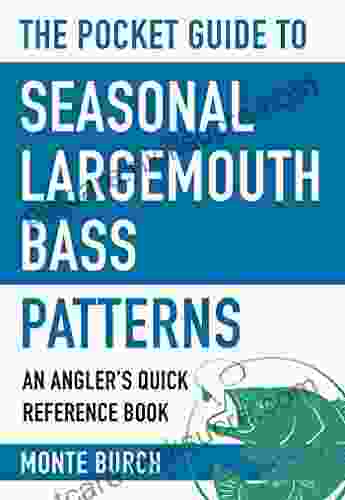
 Marcus Bell
Marcus BellThe Essential Guide to Angler Quick Reference: Your...
Embark on an unforgettable...
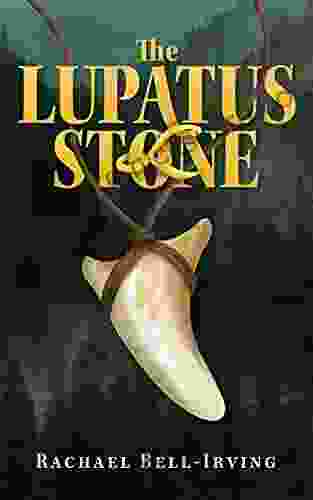
 Juan Butler
Juan ButlerThe Lupatus Stone: A Wicked Conjuring
The Lupatus Stone is a...
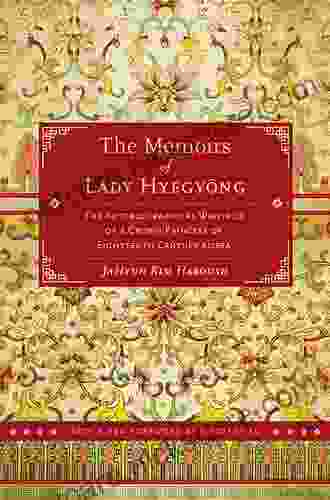
 Alvin Bell
Alvin BellUnveiling the Enchanting Memoirs of Lady Hyegyong: A...
In the annals of Korean...

 DeShawn Powell
DeShawn PowellAMC's Best Day Hikes in the Berkshires: Explore Majestic...
The Berkshires, a...
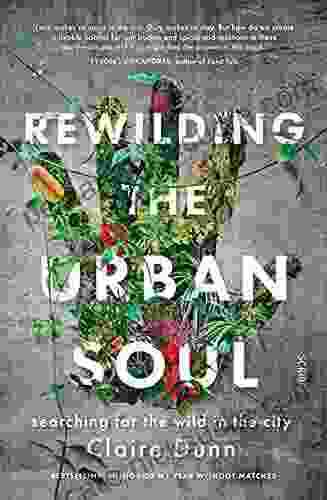
 Clark Campbell
Clark CampbellRewilding The Urban Soul: Reconnecting with Nature in the...
In the heart of sprawling metropolises, where...

 Cruz Simmons
Cruz SimmonsHow to Find Your Family History on a Genealogy Website: A...
Delving into the...
4.5 out of 5
| Language | : | English |
| File size | : | 543 KB |
| Text-to-Speech | : | Enabled |
| Screen Reader | : | Supported |
| Enhanced typesetting | : | Enabled |
| Word Wise | : | Enabled |
| Print length | : | 243 pages |
| Lending | : | Enabled |


